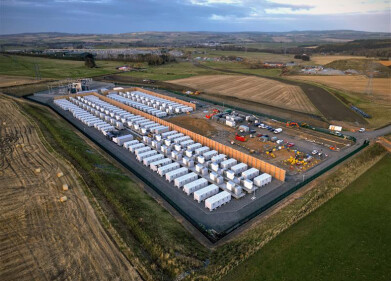Green energy
Compressed Air Energy Storage - A green grid-balancing technology
Jan 18 2023
Author credit: Stephen B. Harrison, sbh4 consulting
Compressed air energy storage (CAES) stores high-pressure air in a large underground storage cavern. When the electricity grid needs a power top-up, the high-pressure air is released through a turbine to generate power.
Power and energy storage will be essential complimentary technologies to a renewables-led world. At present, pumped hydro is the highest capacity power storage technology. However, only a limited number of locations have geography that is suitable for constructing the upper and lower dams of a pumped hydro facility. CAES may be an option in locations where pumped hydro is not possible.
Huntorf CAES
50 years ago, the introduction of pipeline natural gas supplies and LNG imports gave rise to the concept of gas-fired power generation to meet short-term peaks in demand. In contrast to nuclear power or coal fired generation, gas fired power plants can start up from cold very quickly.
The combustion turbine on a gas-fired power plant operates at a pressure of around 30 bar. About 65% of the energy produced by burning natural gas is lost due to the requirement to compress the combustion air up to the operating pressure. This efficiency reduction issue seeded the idea of using stored compressed air to mix with natural gas to avoid the air-compression energy losses during power generation.
Huntorf power plant followed this design concept. The wide spread between power prices during peak and off-peak periods was deemed sufficient to justify investment in such technology. During periods of low demand on the grid, low-cost power is used to compress air into two underground salt caverns. When power generation is required and high prices can be achieved, the compressed air is released and blended with natural gas on the turbine to generate up to 321MW of power. Startup from cold to 50% generation capacity can be achieved within 3 minutes, with full capacity reached after 7 minutes.
Underground geological salt formations in Northern Germany allow the creation of salt caverns. In addition to their application for CAES, they are used to store natural gas to balance seasonal supply and demand. Underground salt caverns are also being created to store hydrogen for a similar purpose.
The two Huntorf caverns are 140,000 and 170,000 cubic metres in capacity. To prevent geological shifts, they have a minimum operational pressure of 20 bar. However, the normal duty cycle is between 43 and 70 bar. The amount of air released during decompression can operate the turbine for about 3 hours.
Energy efficiency innovations for advanced CAES
Air compression at Huntorf requires 60MW of power to fill the caverns over a 12-hour period. The first phase of compression is achieved using an axial compressor. After cooling the air, a second phase of compression takes place on a radial compressor. The air is again cooled prior to being introduced into the salt cavern. In this cycle, there is no attempt to recover the heat energy of compression. The Huntorf CAES facility was constructed in 1978. Since then, CAES has evolved to integrate thermal energy storage to eliminate natural gas usage in the system and improve the overall cycle efficiency.
To increase the round-trip efficiency of CAES, various modifications have been made by innovators such as Hydrostor. One such development is to capture the heat of compression in a thermal energy storage (TES) unit. This heat is then given back to the air as it expands across the power generation turbine to avoid excessive cooling of the air. The innovative combination of TES and CAES is known as advanced, adiabatic CAES, or AA-CAES.
A further enhancement in some AA-CAES systems is that the pressure of air in the underground storage remains constant. This is achieved by the air displacing water in the underground cavern to an above-ground reservoir. In this mode of operation, the underground gas cavern must be mined into rock. The use of a salt cavern for such an application would not be appropriate.
Hydrostor is planning to develop several AA-CAES facilities worldwide. One in Cheshire, in the UK, will use a salt cavern for compressed air storage and the pressure of the stored air will rise and fall through the cycles of operation. Another project planned for Kern County; California will use a rock cavern for the compressed air storage. In this project, water will be used to operate the cavern at a constant pressure.
Events
Apr 08 2025 Targi Kielce, Poland
Apr 08 2025 Bahrain
Apr 10 2025 Beijing, China
Apr 10 2025 Beijing, China
Apr 15 2025 Moscow, Russia














